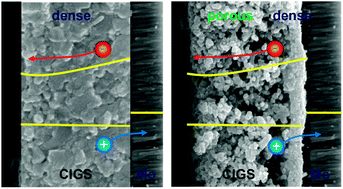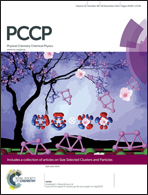Band gap grading and photovoltaic performance of solution-processed Cu(In,Ga)S2 thin-film solar cells
Abstract
The photophysical properties of CuInxGa1−xS2 (CIGS) thin films, prepared by solution-based coating methods, are investigated to understand the correlation between the optical properties of these films and the electrical characteristics of solar cells fabricated using these films. Photophysical properties, such as the depth-dependent band gap and carrier lifetime, turn out to be at play in determining the energy conversion efficiency of solar cells. A double grading of the band gap in CIGS films enhances solar cell efficiency, even when defect states disturb carrier collection by non-radiative decay. The combinational stacking of different density films leads to improved solar cell performance as well as efficient fabrication because a graded band gap and reduced shunt current increase carrier collection efficiency. The photodynamics of minority-carriers suggests that the suppression of defect states is a primary area of improvement in CIGS thin films prepared by solution-based methods.


 Please wait while we load your content...
Please wait while we load your content...